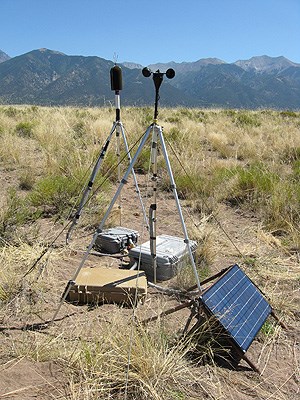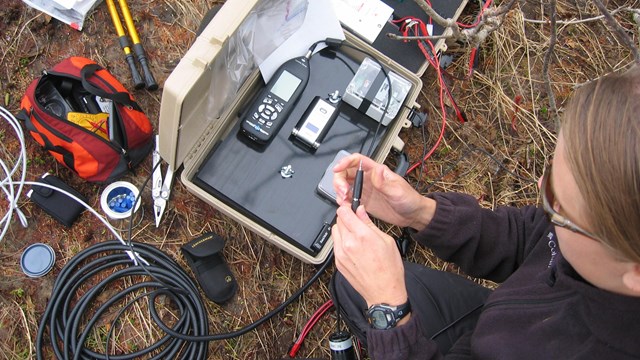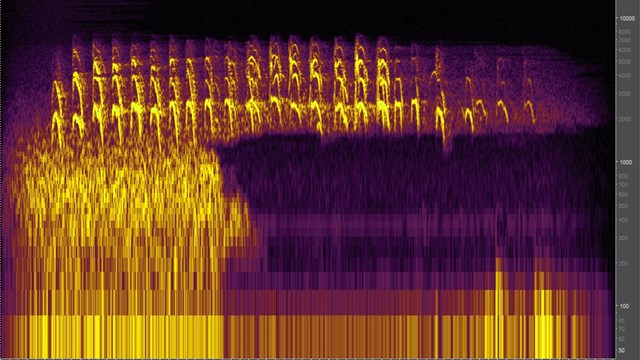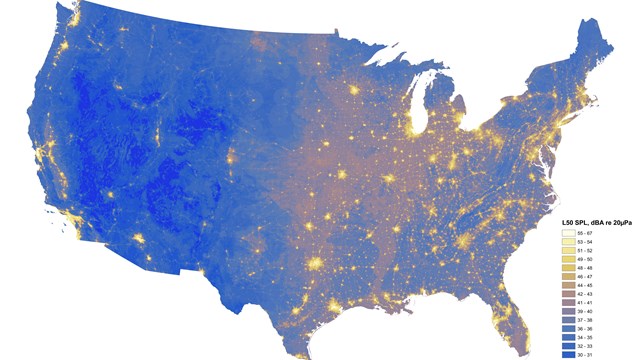
NPS Photo
If a tree falls in the woods, and no one is around to hear it... it may have been recorded!
Efforts to protect the soundscape and overall acoustic environment in our national parks are driven by NPS management policies. But before any action can be taken, park planners and managers need reliable data about a park's existing acoustic environment. What natural and cultural sounds can be heard at the park? What types of noise can be heard? Where, when, and how often are these sounds heard, and how loud are they?
Through sound monitoring efforts, parks can learn about the acoustic environment as a whole and identify desirable and appropriate sound sources, as well as those that are undesirable in the park setting. Information gathered can then be used to identify the potential impacts of non-natural sounds and proposed developments or actions that may affect the acoustic environment.
Noise modeling software can help to predict how sounds will spread across a park landscape. View The Science of Sound, an NPS presentation, to learn more about noise modeling (pdf 2.5MB).

Acoustical monitoring reveals a range of sounds in parks. Scientists use the data to assess park resource conditions.

Several types of data are needed to accurately quantify the acoustic environment of a park.

Geospatial sound maps reflect measurements of sound in parks as well as urban and rural areas across the USA
Source: NPS DataStore Collection 2389. To search for additional information, visit the NPS DataStore.
Last updated: April 23, 2019
